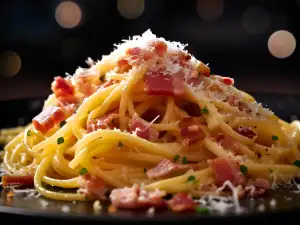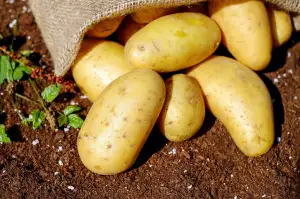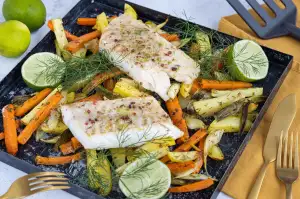Discover the Exquisite Flavors of Pato Thai: A Culinary Delight from Thailand

- History and Origins of Pato Thai
- Key Ingredients Used in Pato Thai
- Traditional Cooking Methods for Pato Thai
- Variations and Regional Adaptations of Pato Thai
- Health Benefits of Pato Thai
- Serving Suggestions and Pairings for Pato Thai
- Popular Pato Thai Restaurants and Locations
- Tips for Making Pato Thai at Home
**Introduction to Pato Thai**
Pato Thai, a renowned dish from Thailand, is a harmonious blend of flavors and textures that tantalize the taste buds. This culinary masterpiece is known for its vibrant colors, aromatic herbs, and bold spices that create a symphony of tastes in every bite. Pato Thai is a popular choice among food enthusiasts worldwide for its unique combination of sweet, sour, salty, and spicy notes that come together to create an unforgettable dining experience. Join us on a journey to discover the exquisite flavors of Pato Thai and delve into the rich culinary heritage of Thailand.
History and Origins of Pato Thai
Pato Thai, a beloved dish from Thailand, has a rich history that dates back to the Ayutthaya period in the 14th century. Originally known as "Phat Thai," it was created during a time when Thailand was experiencing economic hardship and rice noodles were promoted as a national dish to boost the economy. Over time, Pato Thai evolved into the flavorful stir-fried noodle dish we know today, blending influences from Chinese and Thai culinary traditions. Its popularity spread globally, becoming a staple in Thai cuisine and a favorite among food enthusiasts worldwide.
Key Ingredients Used in Pato Thai
Pato Thai, a beloved dish from Thailand, is renowned for its harmonious blend of flavors that come from a variety of key ingredients. Some essential components include fresh herbs like lemongrass, galangal, and kaffir lime leaves, which add a citrusy and aromatic touch to the dish. Additionally, ingredients such as Thai basil, cilantro, and mint contribute to the vibrant and refreshing taste of Pato Thai. Protein sources like chicken, shrimp, or tofu are often used in combination with rice noodles or rice to create a satisfying meal. The signature sauce made from fish sauce, tamarind paste, palm sugar, and chili peppers provides the perfect balance of sweet, sour, salty, and spicy flavors that are characteristic of Pato Thai. These key ingredients work together to create a culinary masterpiece that is both flavorful and satisfying for all who indulge in this traditional Thai dish.
Traditional Cooking Methods for Pato Thai
Traditional Cooking Methods for Pato Thai involve a delicate balance of flavors and techniques. Stir-frying is a common method used to cook Pato Thai dishes, allowing the ingredients to retain their freshness and texture. Boiling, grilling, and steaming are also popular techniques employed in preparing various Pato Thai recipes. The use of aromatic herbs and spices such as lemongrass, galangal, and kaffir lime leaves enhances the depth of flavor in these dishes. Additionally, traditional mortar and pestle are often used to pound fresh ingredients into pastes for curries or marinades, adding authenticity to the cooking process.
Variations and Regional Adaptations of Pato Thai
Pato Thai, also known as "Duck Thai," has various regional adaptations across Thailand. In the southern region, Pato Thai is often spicier with a stronger emphasis on herbs like lemongrass and galangal. In the central region, the dish may include sweeter elements like palm sugar and tamarind paste. Northern variations might incorporate more earthy flavors such as dried chilies and peanuts. Each adaptation showcases the diverse culinary landscape of Thailand while maintaining the essence of Pato Thai's rich and savory flavors.
Health Benefits of Pato Thai
Pato Thai offers a range of health benefits due to its use of fresh ingredients and balanced flavors. The dish typically includes lean proteins such as chicken, shrimp, or tofu, which are excellent sources of protein for muscle growth and repair. The inclusion of vegetables like bell peppers, broccoli, and carrots provides essential vitamins and minerals that support overall health. Additionally, the use of herbs and spices like lemongrass, ginger, and garlic in Pato Thai can have anti-inflammatory and immune-boosting properties. Overall, Pato Thai is a nutritious option that can contribute to a well-rounded diet when enjoyed in moderation.
Serving Suggestions and Pairings for Pato Thai
When it comes to serving Pato Thai, the dish is traditionally presented family-style, with a variety of dishes placed in the center of the table for everyone to share. To enhance the dining experience, Pato Thai is often paired with steamed jasmine rice or noodles. The fragrant and light jasmine rice complements the bold flavors of the dish, while noodles provide a different texture for those looking for variety. Additionally, fresh herbs like cilantro, basil, and mint can be served on the side to add brightness and freshness to each bite of Pato Thai. For beverages, consider pairing Pato Thai with a refreshing Thai iced tea or a cold Singha beer to balance out the spiciness of some dishes.
Popular Pato Thai Restaurants and Locations
Popular Pato Thai restaurants can be found not only in Thailand but also in major cities around the world. In Bangkok, "Thip Samai" is renowned for its Pad Thai, while "Jay Fai" is famous for its Michelin-starred street food. In New York City, "Uncle Boons" offers a modern twist on traditional Thai dishes, including Pato Thai. London's "Som Saa" is known for its authentic and bold flavors of Thai cuisine, including their delicious Pato Thai. These restaurants have gained popularity for their commitment to using fresh ingredients and traditional cooking techniques to deliver the true essence of Pato Thai to diners worldwide.
Tips for Making Pato Thai at Home
1. Use fresh ingredients: The key to authentic Pato Thai lies in using fresh and high-quality ingredients. Make sure to source fresh herbs, vegetables, and proteins for the best flavor.
2. Balance flavors: Pato Thai is known for its perfect balance of sweet, sour, salty, and spicy flavors. Taste as you cook and adjust the seasonings accordingly to achieve the desired taste profile.
3. Prepare ingredients in advance: Pato Thai is a quick-cooking dish, so it's essential to have all your ingredients prepped and ready to go before you start cooking.
4. Invest in a good wok or pan: Traditional Thai cooking often involves high heat and quick cooking times. Investing in a good quality wok or pan will help you achieve that authentic smoky flavor.
5. Garnish with fresh herbs and lime: To enhance the flavors of your Pato Thai, garnish with fresh cilantro, basil, mint, and a squeeze of lime before serving.
By following these tips, you can recreate the delicious flavors of Pato Thai in the comfort of your own home. Enjoy the culinary journey!
In conclusion, Pato Thai is a culinary delight that tantalizes the taste buds with its unique blend of flavors and aromas. With a rich history rooted in Thai culture and traditions, this dish showcases the artistry and expertise of Thai cuisine. The use of fresh ingredients, traditional cooking methods, and regional adaptations all contribute to the diverse and vibrant tapestry of Pato Thai. Whether enjoyed at a local restaurant or prepared at home, Pato Thai offers a truly unforgettable dining experience that celebrates the essence of freshness and authenticity in every bite.
Published: 25. 04. 2024
Category: Food



